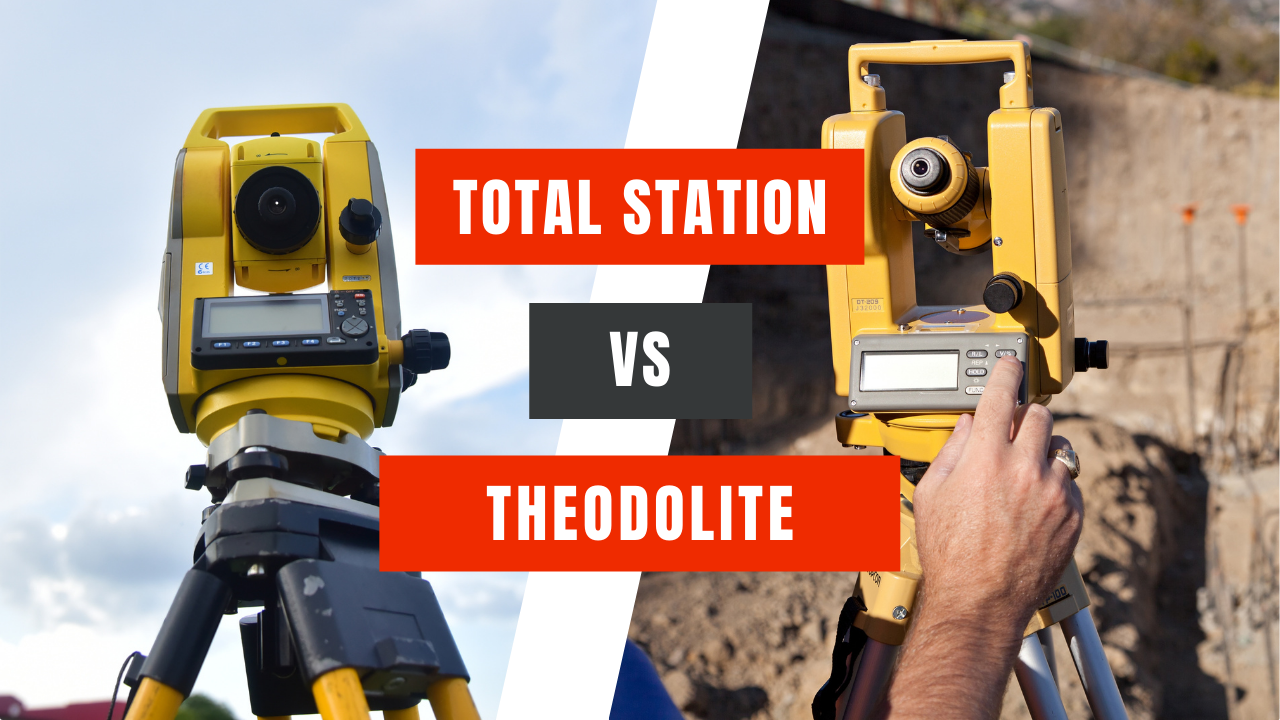The theodolite and total station, two essential tools used in surveying and engineering for measuring angles and distances. Below is a comprehensive guide highlighting their features, functionalities, and advantages.
Theodolite:
Functionality: Theodolites are optical instruments used to measure horizontal and vertical angles with high precision. They are widely used for various surveying tasks, such as measuring angles for triangulation, traversing, and setting out points.
Working Principle: Theodolites have a telescope mounted on a rotating horizontal and vertical axis. By aligning the telescope’s crosshairs with specific targets, they can measure angles accurately.
Measurement Capabilities: Theodolites can measure horizontal angles (in the range of 360 degrees) and vertical angles (typically from 0 to 90 degrees). They are mainly used for angle measurements and require additional tools like chains or tapes for distance measurements.
Accuracy: Theodolites offer excellent angular accuracy, typically ranging from a few seconds to minutes of arc.
Applications: Theodolites are suitable for various applications like topographic mapping, construction layout, boundary surveys, and monitoring structures.
Total Station:
Functionality: Total stations are advanced surveying instruments that integrate electronic distance measurement (EDM) capabilities with a theodolite. They combine angle and distance measurements, making surveying more efficient and accurate.
Working Principle: Total stations work on the same principle as theodolites, but they have an added EDM unit. This unit uses laser or infrared signals to measure distances between the instrument and a reflector, which is placed on the target point.
Measurement Capabilities: Total stations can measure both angles (horizontal and vertical) and distances simultaneously. Some models can measure distances up to several kilometers with high accuracy.
Accuracy: Total stations offer high precision for both angle and distance measurements. The accuracy of total stations can be sub-millimeter for distance measurements and sub-seconds for angle measurements.
Applications: Total stations are extensively used in various application. Including land surveying, engineering projects, construction layout, building information modeling (BIM), and industrial measurements.
Comparison:
Efficiency: Total stations are more efficient as they combine angle and distance measurements in a single instrument, saving time and effort compared to theodolites that require separate distance measurement tools.
Accuracy: While both instruments offer high accuracy, total stations generally provide slightly better results due to their integrated EDM capabilities.
Ease of Use: Theodolites are relatively straightforward to use, but total stations may have a steeper learning curve due to their added features and electronic components.
Cost: Total stations are more expensive than traditional theodolites due to their advanced technology.
Suitability: Theodolites are still useful for many surveying tasks, especially when budgets are limited and when specific measurements don’t require distance readings.
In summary, the choice between a theodolite and a total station depends on the specific requirements of the surveying or engineering project. Theodolites are cost-effective for angle measurements, while total stations provide added efficiency and accuracy by combining both angle and distance measurements in a single device.




